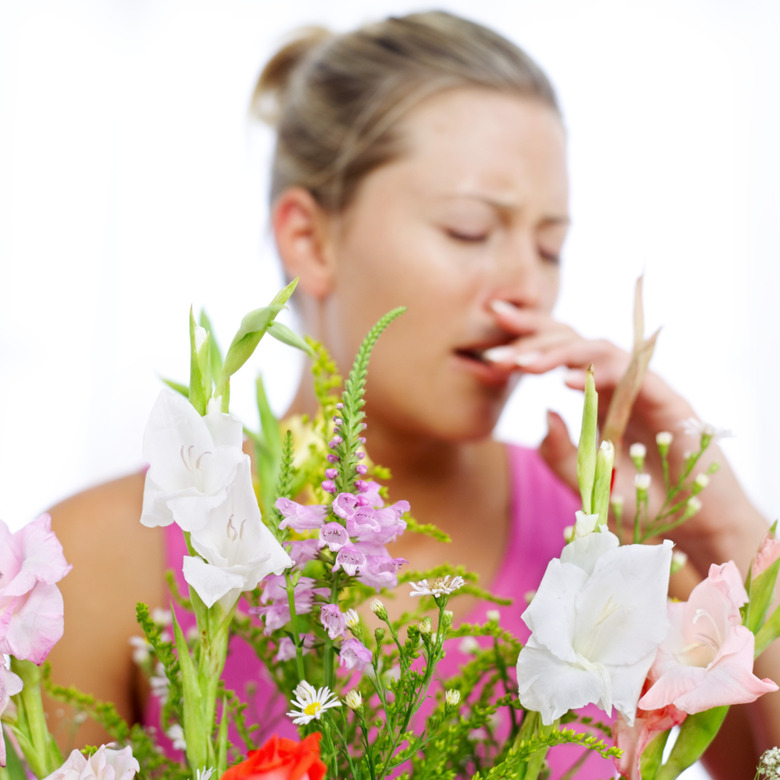Does Rain Raise Or Lower The Pollen Count?
Pollen counts give the number of particles per cubic meter of air, but the size of the particles is also important for the level of allergies when it rains. Rain influences the number of air particles, and several mechanisms act to decrease or increase the total number. Whether rain raises or lowers the pollen count depends on exactly how the rain storm develops and the length of time over which the pollen count is checked. Often the pollen count will increase just before a storm, decrease as a gentle rain is falling and increase again later on. Looking at the ways in which rainfall affects the air particles helps predict the level of pollen after rain.
TL;DR (Too Long; Didn't Read)
Rain tends to affect pollen counts and reduce high pollen count symptoms, but the exact influence depends on the mechanisms that come into play. Wind tends to increase pollen counts as pollen is swept off the grasses and trees that produce it. Violent winds and thunderstorms also tend to break up whole pollen grains into smaller particles that increase the pollen count. Rain drops attract pollen grains and remove them from the air. Taking all the influences together, rain storms can both increase and decrease pollen counts at different times.
Thunderstorms and High Pollen Counts
Thunderstorms and High Pollen Counts
Thunderstorms are often preceded by gusts of cold wind that can pick up pollen from grasses, weeds and trees. The rain that accompanies thunderstorms can be heavy with large drops. The large drops are not as good at absorbing pollen particles and leave more pollen in the air than a gentle rain does. Violent winds and large rain drops tend to break up pollen into smaller particles, resulting in an increased particle count. These different mechanisms can produce a high level of atmospheric pollen after rain.
Reduced Allergies When It Rains
Reduced Allergies When It Rains
Many rain showers are not accompanies by strong winds or rapid shifts in temperatures. Instead, small drops of rain fall gently to the ground and take a lot of the pollen particles in the air with them. The small drops of rain are better at cleaning the air than the larger drops in storms because pollen particles are absorbed by rain drops through a process called coagulation. As the rain drops fall, they develop a small electric charge that attracts particles in the air. Small drops also have more surface area per volume than large drops. The electric charge and the larger surface area combine for more effective coagulation and a better cleaning effect.
The Type of Rain Affects High Pollen Count Symptoms
The Type of Rain Affects High Pollen Count Symptoms
Because the pollen count shortly before, during and after rain depends on how the rain falls, the type of rain can result in reduced allergies or high pollen count symptoms. Rain from thunderstorms and the storms as a whole don't reliably reduce pollen counts and may even raise them. A day or two of rain showers may wash the air clean, reduce pollen counts substantially and give relief to allergy sufferers.
Typically any storm with wind will tend to increase pollen counts as pollen grains are scattered and broken up into small but still irritating particles. While rain washes out pollen more or less effectively depending on the rain droplet size, pollen counts often increase again after the rain stops. Plants normally become more active and release more pollen, and the high humidity after a rainfall encourages pollen production. As the rain water evaporates, dry, hot days further the spread of pollen, and pollen counts tend to go up. This means that some types of rain may temporarily lower the pollen count, but after the rain the pollen count is likely to rise even higher.
Cite This Article
MLA
Markgraf, Bert. "Does Rain Raise Or Lower The Pollen Count?" sciencing.com, https://www.sciencing.com/rain-raise-lower-pollen-count-23009/. 24 August 2018.
APA
Markgraf, Bert. (2018, August 24). Does Rain Raise Or Lower The Pollen Count?. sciencing.com. Retrieved from https://www.sciencing.com/rain-raise-lower-pollen-count-23009/
Chicago
Markgraf, Bert. Does Rain Raise Or Lower The Pollen Count? last modified March 24, 2022. https://www.sciencing.com/rain-raise-lower-pollen-count-23009/
